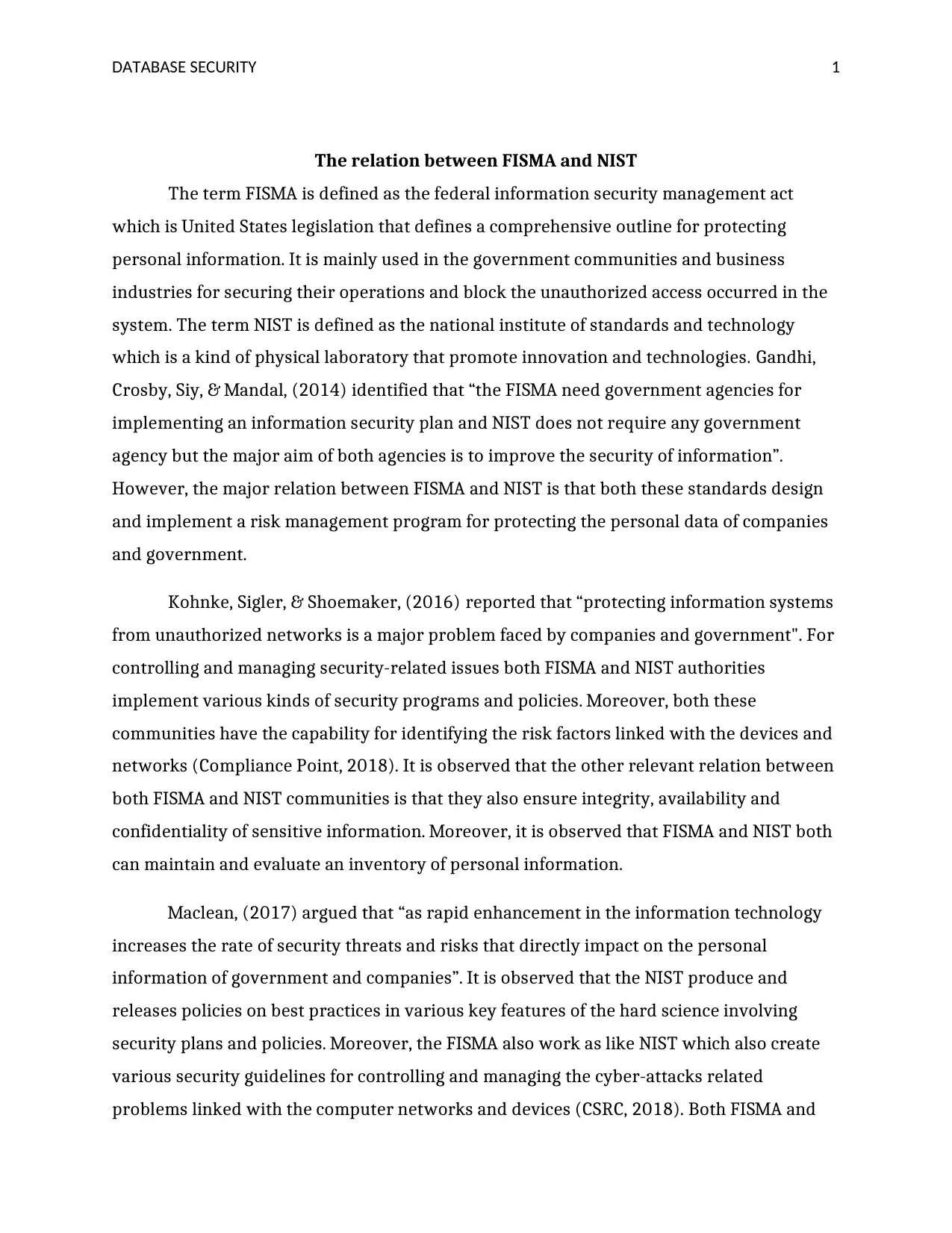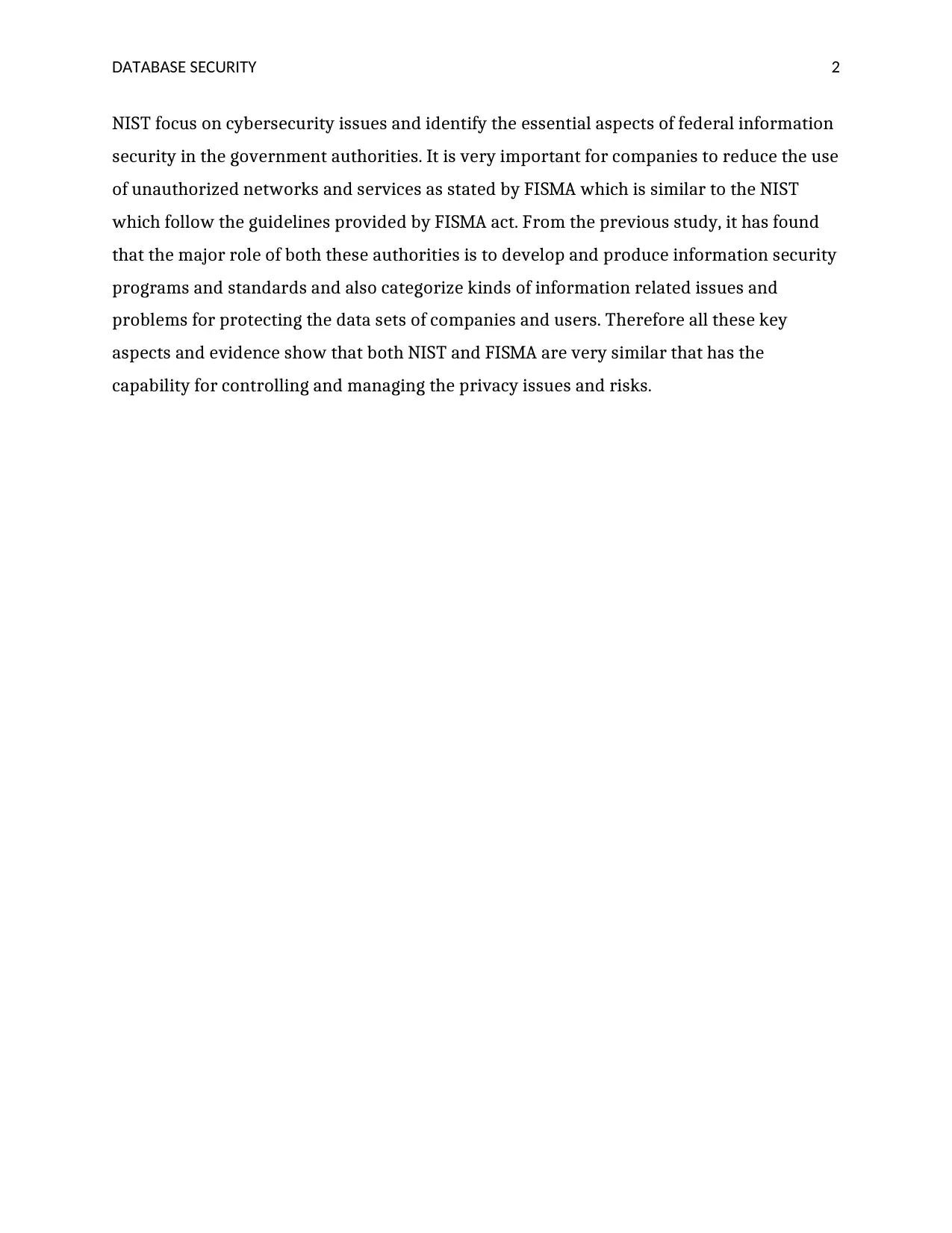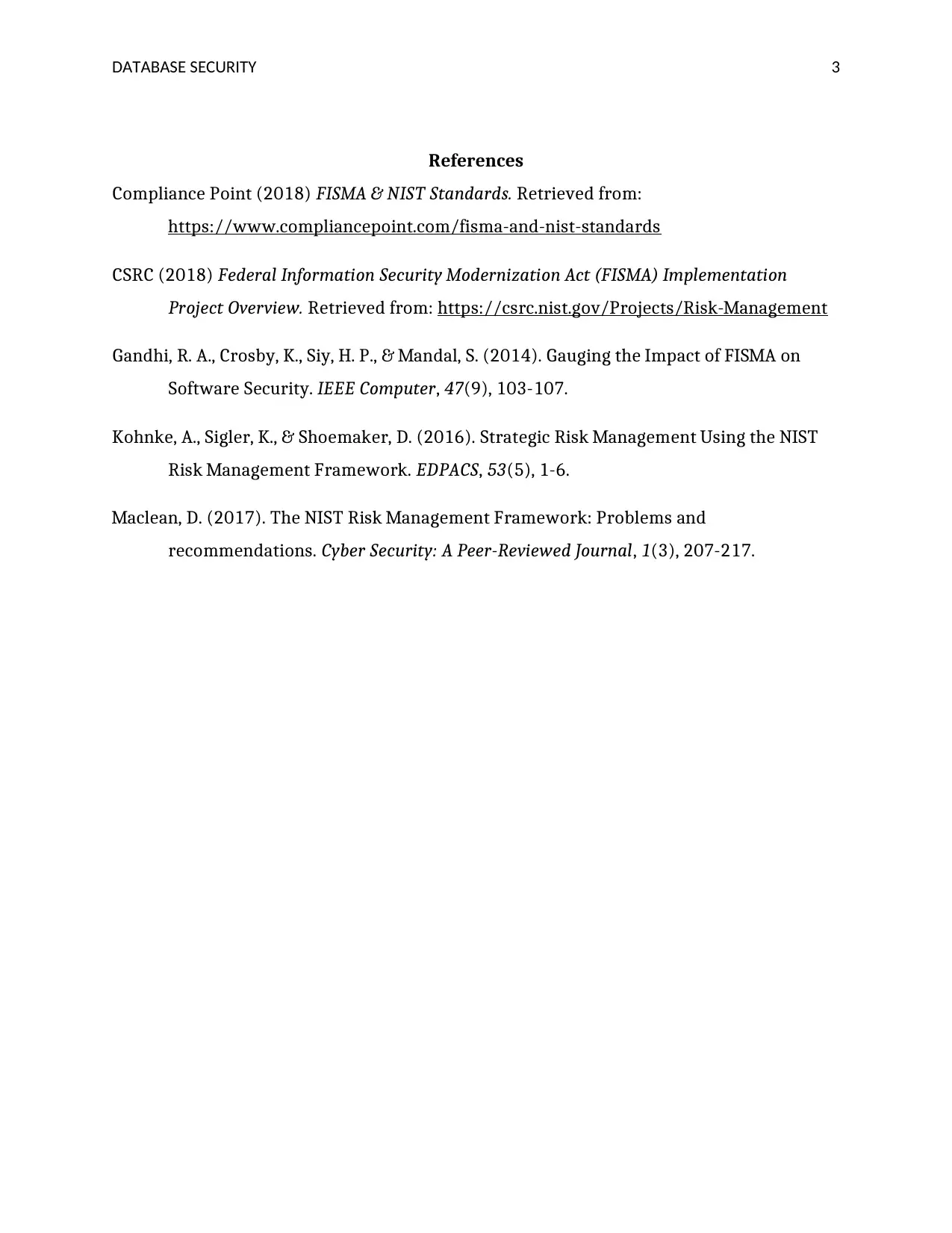A Comparative Analysis of FISMA and NIST Security Standards
VerifiedAdded on 2022/12/20
|4
|675
|66
Report
AI Summary
This report delves into the relationship between the Federal Information Security Management Act (FISMA) and the National Institute of Standards and Technology (NIST) in the context of database security. It highlights how FISMA, a U.S. legislation, and NIST, a technology and innovation promoter, work together to secure personal information and manage risks. The report emphasizes that both FISMA and NIST implement risk management programs to protect sensitive data, ensuring integrity, availability, and confidentiality. It discusses their role in identifying risks associated with devices and networks, and their contribution to cybersecurity. The report also references relevant studies and sources to support the analysis, emphasizing the importance of these standards in mitigating security threats and protecting data in both government and corporate environments. The conclusion underlines the similarities between FISMA and NIST in controlling privacy risks and protecting data sets.
1 out of 4











![[object Object]](/_next/static/media/star-bottom.7253800d.svg)